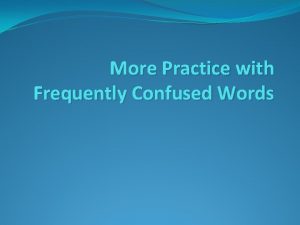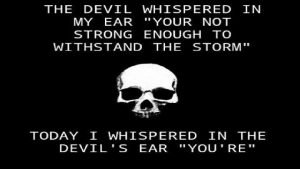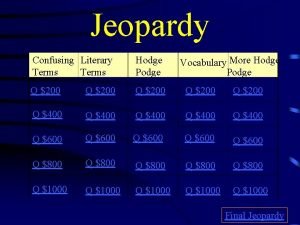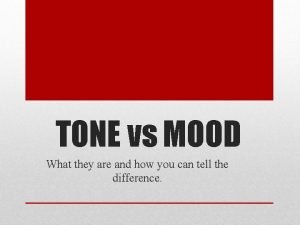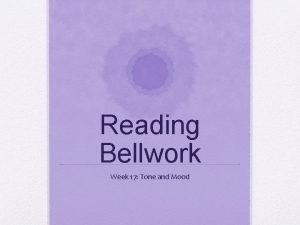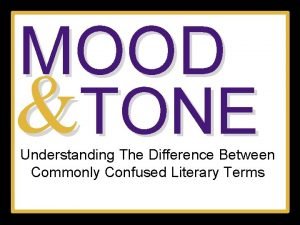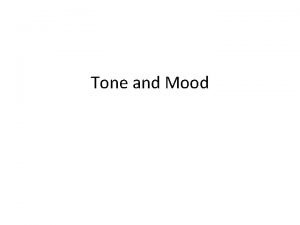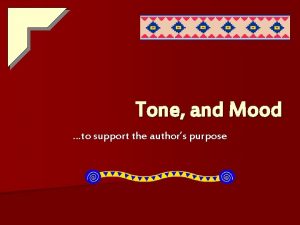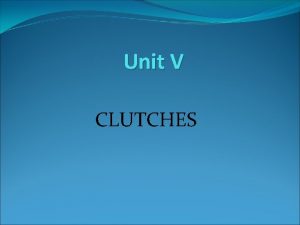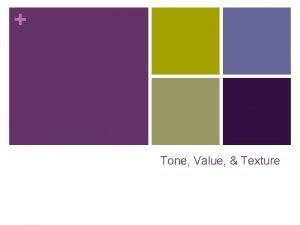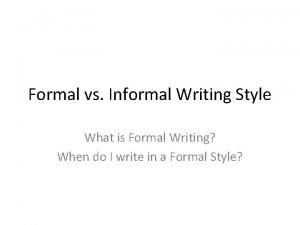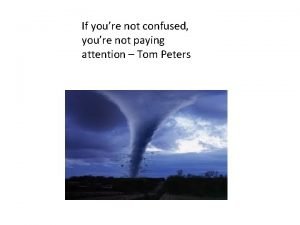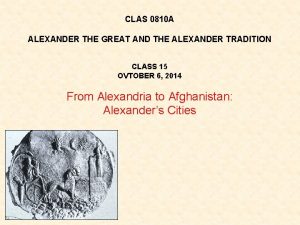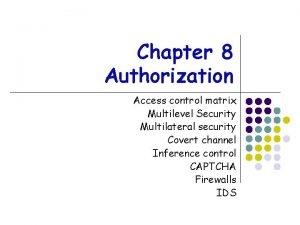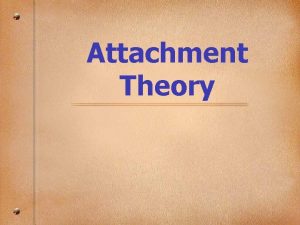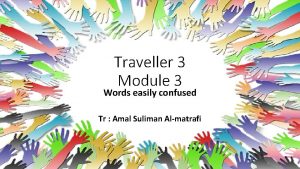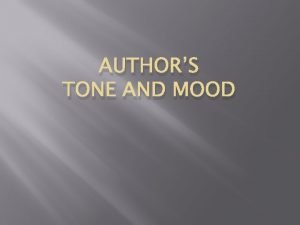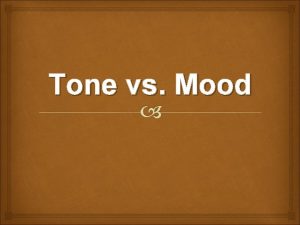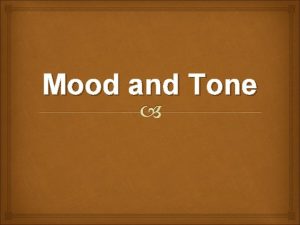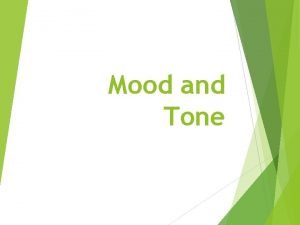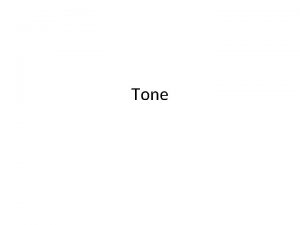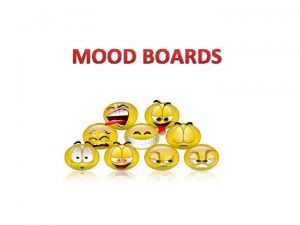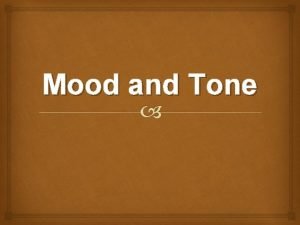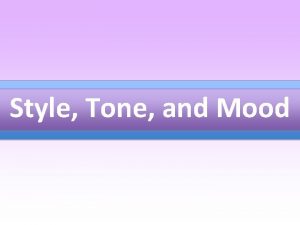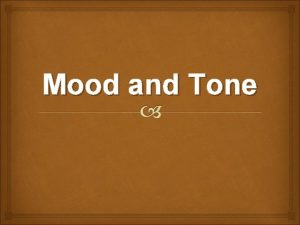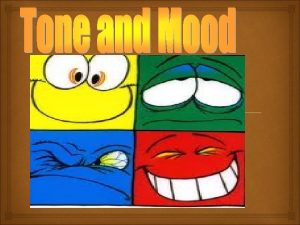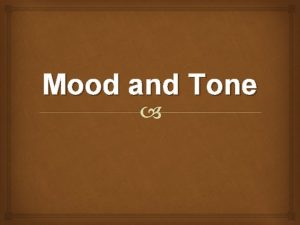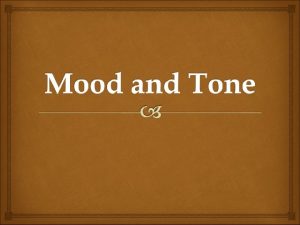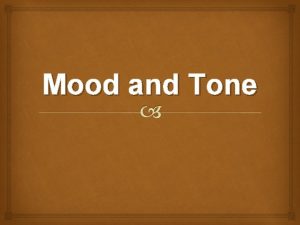MOOD TONE Understanding The Difference Between Commonly Confused

MOOD &TONE Understanding The Difference Between Commonly Confused Literary Terms

Mood or Tone? Mood and tone are literary elements that are often confused or mixed up by students. Do you know the difference? © Presto Plans

Tone is the AUTHOR’S or NARRATOR’S attitude towards the audience, the subject, or characters. The tone influences the story’s mood /atmosphere. © Presto Plans

Tone Examples Below are a few examples of words you could use to describe an author’s tone: Cynical Sympathetic Approving Sarcastic Objective © Presto Plans

Tone Activity Try saying the following phrase with different tones/attitudes: “Go to my office, Sarah” - Secretive - Angry - Loving - Bossy Just as you can hear the difference in tone when you say this phrase, an author can show these different tones through their writing style! © Presto Plans

How To Find Tone is not stated directly. You must read between the lines to see what the author’s or narrator’s attitude is on the subject. Tone can be revealed through: - Dialogue between characters - Descriptions - Author’s diction (word choice) - The themes that emerge © Presto Plans

What Is The Author’s Tone? Read the passage below and determine the author’s tone. “Sometimes these things would make Mother and Father really angry and they would shout at me or they would shout at each other. Sometimes Father would say “Christopher, if you do not behave I swear I shall knock the living daylights out of you, ” or Mother would say “Christopher, I am seriously considering putting you in a home” - The Curious Incident Of The Dog In The Night © Presto Plans

What Is The Author’s Tone? “Sometimes these things would make Mother and Father really angry and they would shout at me or they would shout at each other. Sometimes Father would say “Christopher, if you do not behave I swear I shall knock the living daylights out of you, ” or Mother would say “Christopher, I am seriously considering putting you in a home” - The Curious Incident Of The Dog In The Night Although this is a serious subject matter, Christopher’s tone as the narrator is quite indifferent. The author doesn’t use any emotionally charged words when describing his parents words. He explains them very matter of fact with almost complete objectivity. © Presto Plans

Mood is the emotion that the READERS feel while reading about the subject. Mood and Atmosphere are terms which basically mean the same thing and can be used almost interchangeably; however, some argue there are slight differences between the two terms. © Presto Plans

Mood Examples Below are a few examples of words you could use to describe the mood of a piece of writing : Cheerful Frightening Romantic Idyllic © Presto Plans

How To Find Mood is the emotions that you (the reader) feel, so to find mood, you need to look at what emotions you are going through as you read the text. © Presto Plans

What Is The Author’s Mood? We know the tone of this passage is indifferent and objective, but what is the mood? “Sometimes these things would make Mother and Father really angry and they would shout at me or they would shout at each other. Sometimes Father would say “Christopher, if you do not behave I swear I shall knock the living daylights out of you, ” or Mother would say “Christopher, I am seriously considering putting you in a home” - The Curious Incident Of The Dog In The Night © Presto Plans

What Is The Author’s Mood? “Sometimes these things would make Mother and Father really angry and they would shout at me or they would shout at each other. Sometimes Father would say “Christopher, if you do not behave I swear I shall knock the living daylights out of you, ” or Mother would say “Christopher, I am seriously considering putting you in a home” - The Curious Incident Of The Dog In The Night The mood of this passage is one of horror or shock as the reader is responding emotionally to the terrible things that Christopher’s parents have said to him. The mood is further amplified by the juxtaposition between Christopher’s tone (complete indifference) to the reader’s emotional reaction to his words (shock and horror). © Presto Plans

Recap Tone - the AUTHOR’S or NARRATOR’S attitude towards the audience, the subject, or characters. Mood - the emotion that the READERS feel while reading about the subject. © Presto Plans

Fonts Not Appearing Correctly? Install the following font to your computer and reopen this presentation. http: //www. fontspace. com/font-diner/cherry-cream-soda © Presto Plans

Terms of Use The original purchaser of this document is granted permission to copy for teaching purposes only. If you are NOT the original purchaser, please download the item from my store before making any copies. Redistributing, editing, selling, or posting this item or any part thereof on the Internet are strictly prohibited without first gaining permission from the author. Violations are subject to the penalties of the Digital Millennium Copyright Act. Please contact me at prestoplans@gmail. com if you wish to be granted special permission. © Presto Plans
- Slides: 16
